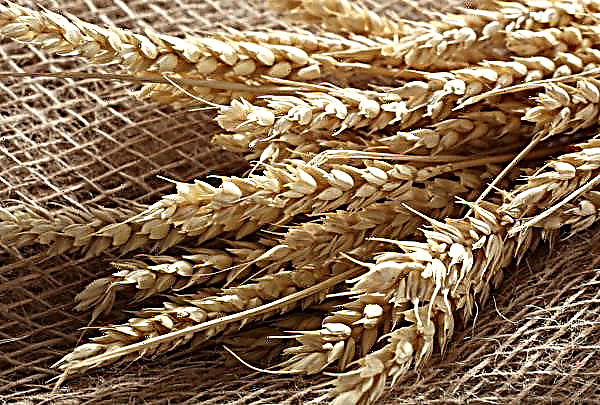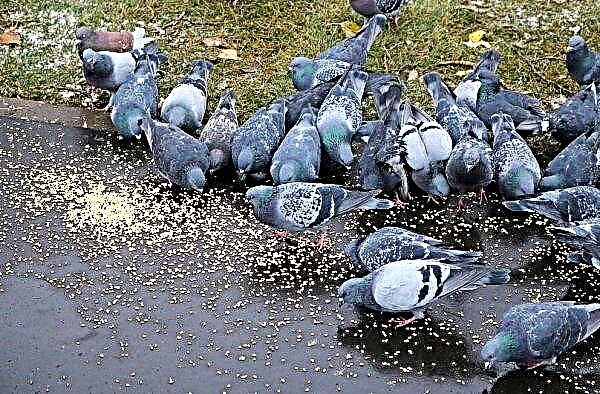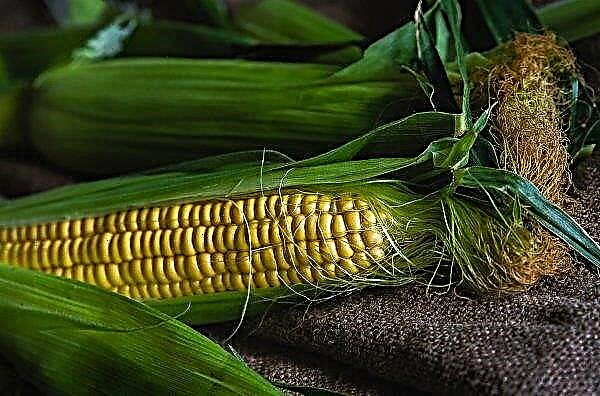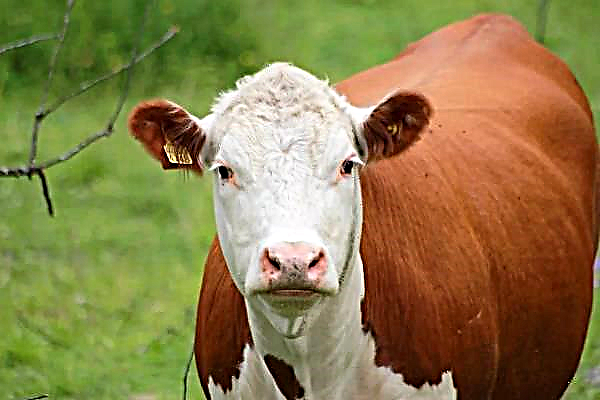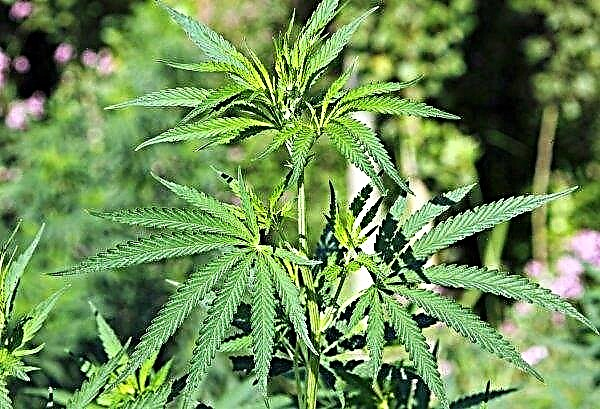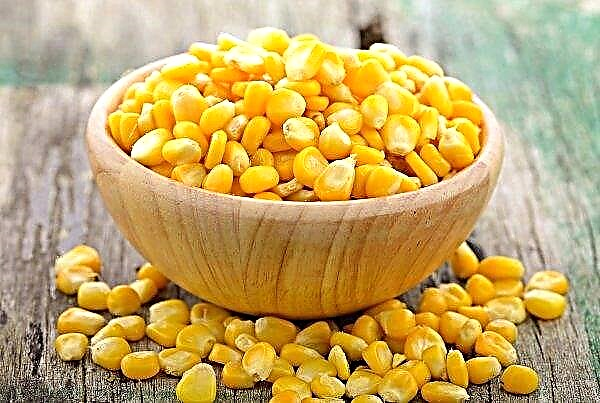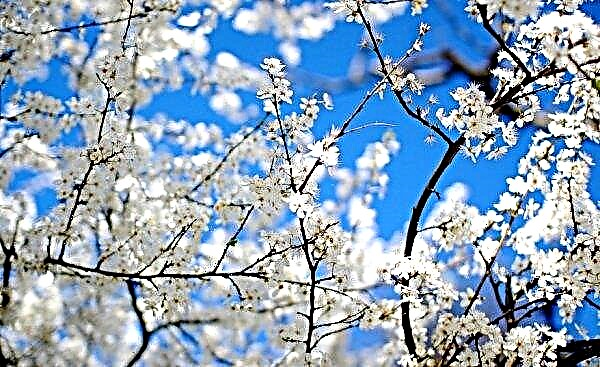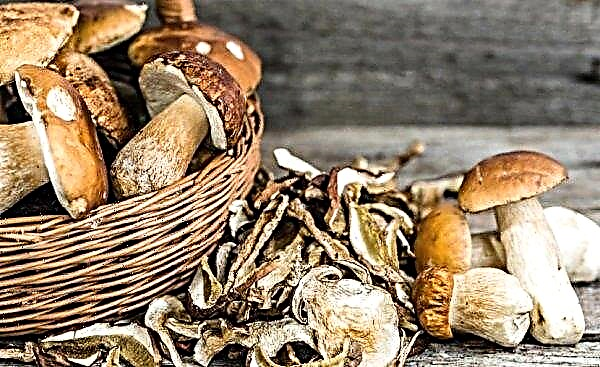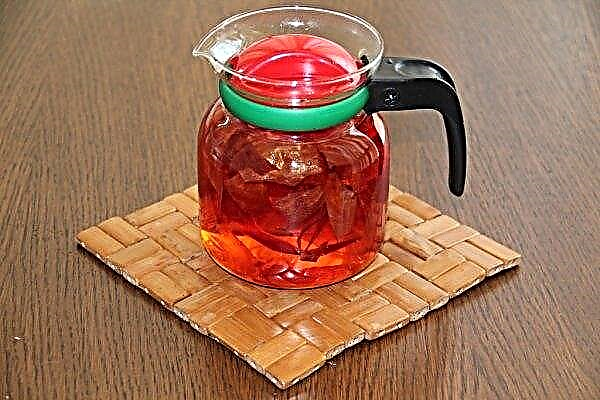Evergreen shrubs are a universal way to decorate any site. They are often used in landscape design, because they are unpretentious and beautiful, and can withstand severe weather conditions. One of these unique plants is the Hetz Virginia Juniper.
Botanical Description
Juniper Hetz in the botanical description has the name Juniperus virginiana Hetz. It is a coniferous plant native to North America. The most common in nature are monoecious instances of this shrub, and only occasionally are dioecious. Belongs to the Cypress family, rocks, mountainous or hilly terrain with good airflow are the favorite places of growth in the wild flora. Hetz is a very common and popular variety that is grown in greenhouses and summer cottages.. The maximum height of the described juniper bush is approximately 2.5 meters. The diameter of the crown reaches 4 meters.

The main features of the Hetz shrub:
- sprawling, stunted (especially in the first years of growth);
- lack of prickly needles (needles are short and soft, scaly type);
- the color of the needles is saturated, dark green, younger plants are painted lighter;
- in winter, the needles darken and acquire a brown tint.
Did you know? Juniper is the oldest plant on the planet. The most ancient trees of this species existed on Earth 50 million years ago.
The preferred soil for the growth of Hetz is slightly acidic, alkaline, well-drained. The plant tolerates direct sunlight, is resistant to drafts, frosts, damp. The main condition for good growth is active watering after planting a seedling in open ground. Ideally grows in sunny open areas, near large stones, on hilly terrain, in lowlands or on mountain plateaus. You can recognize the Hetz variety by its low crown height, bright needles and dark blue berries with a white coating. The plant tolerates drought painlessly.

Landing
To plant juniper on a site, you need to remember a few simple rules. First: juniper stalks, like young shoots (1-2 years old), cannot be immediately planted in open ground. Only grown plants 3-4 years old are allowed to be placed in a permanent place in the ground. Landing work is carried out in late April - early May.
Video: Planting instructions for virgin juniper
Seedling preparation
Before planting, the seedling is prepared for transfer to a constant place of growth. Be sure to leave an earthen lump on the roots, so that it is easier for the bush to take root in a new area. The plant is removed from the pot in which it grew before moving or gently dug up, preserving the roots as much as possible. It is advisable to choose not a sunny day for planting, but after transferring the plant to the soil, water it abundantly.

Site selection and preparation
The composition of the soil for juniper does not play a special role, and yet the best growth and brighter needles in the plant are observed, as mentioned above, on slightly acidic or alkaline fertile soils. Can grow on sandy areas, rocky terrain, mountain slopes. On artificially created alpine hills, this shrub also develops beautifully. The illumination of the plot is preferably medium, natural. Penumbra does not interfere with harmonious growth, but too bright light sometimes leads to the fact that the needles “burn out” and acquire an orange tint, dries. This is characteristic only for regions with a long duration of the “warm” season. In the northern regions, Hetz Juniper grows and develops in the best way.
Important! Juniper root flora is unfavorable for fruit bushes and trees, since it contains rust mushrooms. Therefore, this plant can coexist with ornamental shrubs and flowers (buddleya, chubushnik, hydrangea, etc.), but be away from pears or apple trees.
Landing process
The sequence of actions during the process of planting juniper:
- the size of the hole is calculated based on the height of the seedling - the depth should be twice as much;
- the bush is placed in a landing pit, while the earthen lump should slightly rise above the soil;
- The soil around the plant is compacted, watered abundantly. Recommended soil composition for filling the pit: two parts of turf, one part of sand and peat. You can fertilize this mixture with nitroammophosomes (200 g per plant);
- then put on the root zone of peat with a dense layer 10 cm thick;
- a young plant is periodically sprayed, but only until it takes root (this will be seen by the bright color of the needles, if the bush starts to hurt, it will change color, dry out).

If the soil is loamy, drainage of gravel or coarse sand is added to the pit to avoid waterlogging of the roots.. The distance between the bushes should not be less than 1.5 meters, since the plant has the ability to grow. Recommended distance is 4 m.
Juniper Care
So, the juniper is planted. It's time to provide him with quality care. As in the case of other conifers, it consists in watering, feeding and pruning, as well as various preventive measures against diseases and pests.
Video: Juniper Care
Watering
Watering the bush is carried out both immediately at the time of planting, and later, until the juniper rooting. In the future, the plant should be sprayed, but not plentiful, since the abundance of water on the inside of the crown leads to decay and the appearance of fungus or rot. Generally, excess irrigation is harmful to juniper seedlings, and adult plants are abundantly watered only in summer, during periods of severe drought. The rest of the year, Hetz has enough rainwater, moisture from the air and soil. Recommended watering regime: no more than 1 time per week.

Top dressing
Fertilizing, of course, is used, but not all year round, but only in the spring, after removing the weed grass around the bush. Fertilize with nitroammophos. The substance in the form of a powder is carefully mixed with soil in the near-stem earthen circle - it is enough to take 30 g of fertilizer. After top dressing, they must be watered (one bucket of water is enough). If the soil is too scarce, infertile, then it is permissible to fertilize it throughout the growing season, however, a break in fertilizer application should be at least 1 month.
Did you know? Juniper needles are unique — It cleans the air from pollution. One hectare of plantations of this coniferous plant releases 30 kg of disinfectant compounds (phytoncides) per day.
Loosening and mulching
Loosening the soil - a mandatory procedure so that the root system of juniper bushes can receive a sufficient amount of oxygen. In spring and summer, loosening is carried out periodically, as necessary, once every 3-4 weeks. After loosening and watering, you can sprinkle a piece of soil near the trunk with a thin layer of peat. So moisture will stay longer in the ground. Mulching is carried out by the method of sprinkling under the base of a bush of wood pine sawdust. This procedure is performed after loosening and helps to prevent the appearance of pests in the near-trunk zone.

Pruning
Pruning as such is rarely done, mainly to remove diseased branches or dried shoots. Juniper shearing, if required by garden design, is done by pruning shears. Plants are neatly attached to the desired branch length. Thinning is an important part of gardening. It is especially important to produce it so that the inside of the dense crown does not turn yellow, and that the plants receive a sufficient amount of air. Thinning is performed twice a year: in spring - before the appearance of berries on the bushes, and in autumn - after weeding the site. Forming haircut is carried out as necessary.

Winter preparations
Adult plants older than four are not afraid of frost, and yet, if long periods with freezing temperatures are set in the region in winter, it is recommended to insulate the bushes with agrofibre or burlap, and sprinkle the soil under the shrub with sawdust and even cover with newsprint. If the climate is mild, it is not necessary to cover the juniper, it is enough to sprinkle the root zone with mulch. Young seedlings are always insulated for the winter, even if they grow in pots.
Important! No preventive manipulations and procedures for fertilizing shrubs during the winter are carried out. During this period, the plant is in a state of winter sleep (suspended animation).
Possible diseases and pests
Juniper Disease:
- shute;
- alternariosis;
- rust;
- fungal lesions of the cortex.
Eliminated by fungicides: “Skor”, “Chorus”, “Champion”, which are used according to the annotation to the preparations.

Pests:
- scale shield;
- gall midge;
- moth.
Pest Control Products: “Fundazole”, “Actellik”, “Ridomil Gold”. Dosage and processing are carried out according to the instructions.

Breeding methods
Juniper breeds in four ways:
- vaccination;
- layering;
- cuttings;
- seeds.
The latter method is used mainly in nurseries, because it is complex and requires rich knowledge in the field of botany. The first three methods are recommended for amateur gardeners. By the way not all shrubs of the Cypress family are well-cut, therefore, a common way to propagate a plant for growing in a summer cottage or in a garden is to plant a “finished” seedling or cuttings. These are young shoots of plants grown from an adult, already rooted bush.
From April to July, cuttings are taken from the maternal juniper shrub and transplanted into a plastic pot for rooting. Cuttings are harvested in spring, cutting material from an adult bush. For this, annual shoots are taken no more than 12 cm long.
Video: Juniper propagation by cuttings
Use in landscape design
In landscape design, Virginia Hetz is used everywhere in Europe, the USA, China, Japan and other countries. He is stunted and sprawling, so perfectly in harmony with higher conical plants. It is massively combined with such a flowering perennial like hydrangea. It looks advantageous in the vicinity of barberry, dogwood, any kind of coniferous trees and bushes.
This is an accent plant. Designers recommend placing it near a porch, an open terrace, interspersing with such landscape compositions as a rockery or a rock garden. Due to the rich palette of colors, different varieties of junipers combine in one area - in the end, you can form a harmonious transition of shades from saturated green to light blue.
Planting juniper bushes as part of a group of plants on an alpine hill is practiced - they look great near large stones, statues. Since shearing and thinning are well tolerated, they therefore always look neat and elegant.

An adult juniper bush will decorate any site, and, in addition, will delight with a delicate aroma. Evergreen shrub with proper care and due patience of the gardener will delight others with exquisite beauty for many years.

